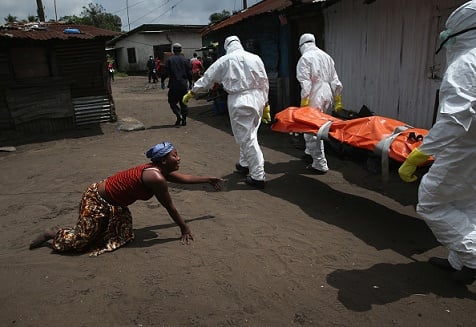
Four new suspected Ebola patients, including a feverish passenger removed from a plane in Madrid, have been reported by Spanish authorities.
The reports follow news earlier this week that a second Texas health care worker – Amber Jay Vinson , a 29-year-old nurse from Ohio – tested positive for the deadly virus after treating a West African man who ultimately died from the disease.
Now, officials are trying to track down and interview all 132 people on the flight Vinson took just before her diagnosis — and concerns are mounting about the spread of the virus across the globe.
If you, like the rest of the world, have a bunch of burning questions about this frightening disease, take five minutes to read through Mamamia’s Ebola cheat sheet.
What are the symptoms of Ebola?
“The disease caused by the virus is dramatic and awful,” epidemiologist and infectious diseases specialist Allen Cheng writes for The Conversation.
While it starts with flu-like symptoms including a sore throat, fever and muscle pain, within a few days nausea, vomiting and diarrhoea develop.
“While all this is happening, the virus is also attacking the internal organs, particularly the liver and kidneys. As these organs start to fail, the patient starts to bleed and eventually succumbs to dehydration and blood loss,” Dr Cheng says.


Top Comments
Ebola (and the closely related Marburg) can spread through direct contact and aerosol(droplets sprayed by coughs etc). This has been known for many years.
The difference between this out break and others is the location. Typically Ebola spreads through a small community, kills200- 300 people and literally burns out due to lack of population to sustain it. This time it got hold in a populated area and due to mobility of the population it spread.
Many mistakes were made. The areas should have been quarantined much earlier, non essential transport should have been stopped, and an education and hygiene program implemented .
Both the governments in the region and international governments should have acted much earlier.
The virulence , mortality rate and randomness of previous out breaks have always made this disease difficult to study.
Read The Hot Zone by Richard Preston , it's a little out of date but discusses filoviruses like Ebola in some detail
Frightening. I guess quarantines at the source and on arrival from an affected area may be necessary, or we could be facing nature's answer to overpopulation.